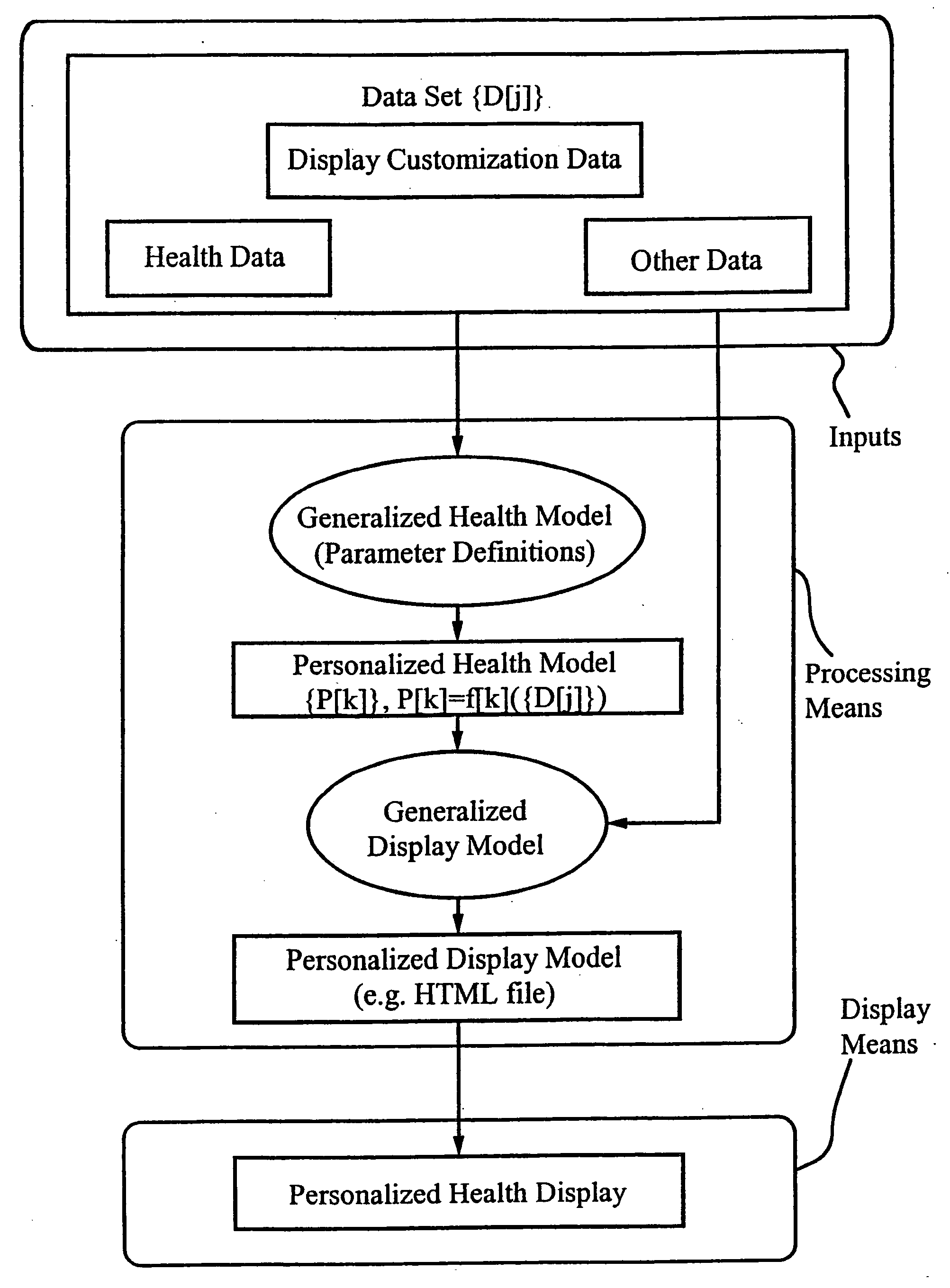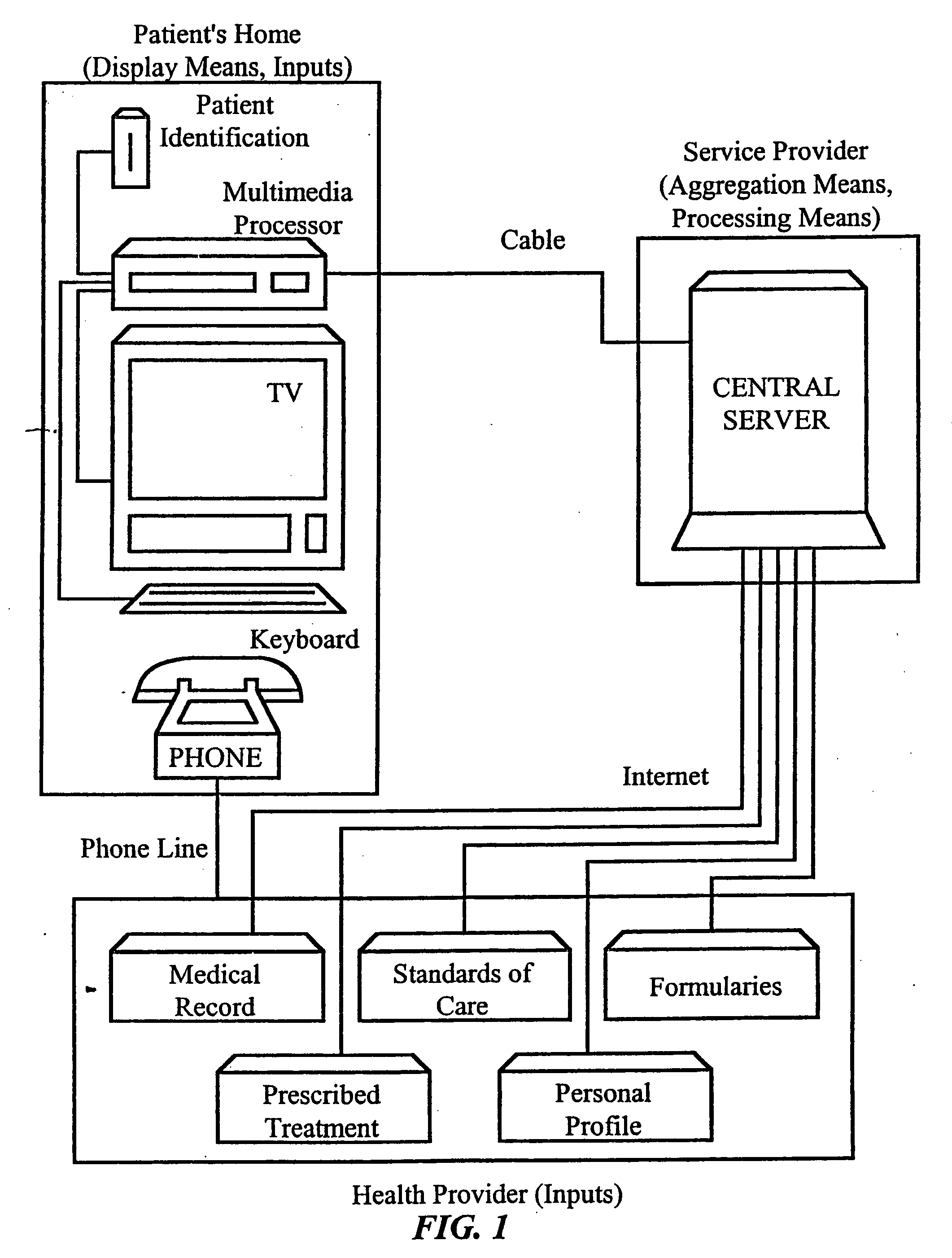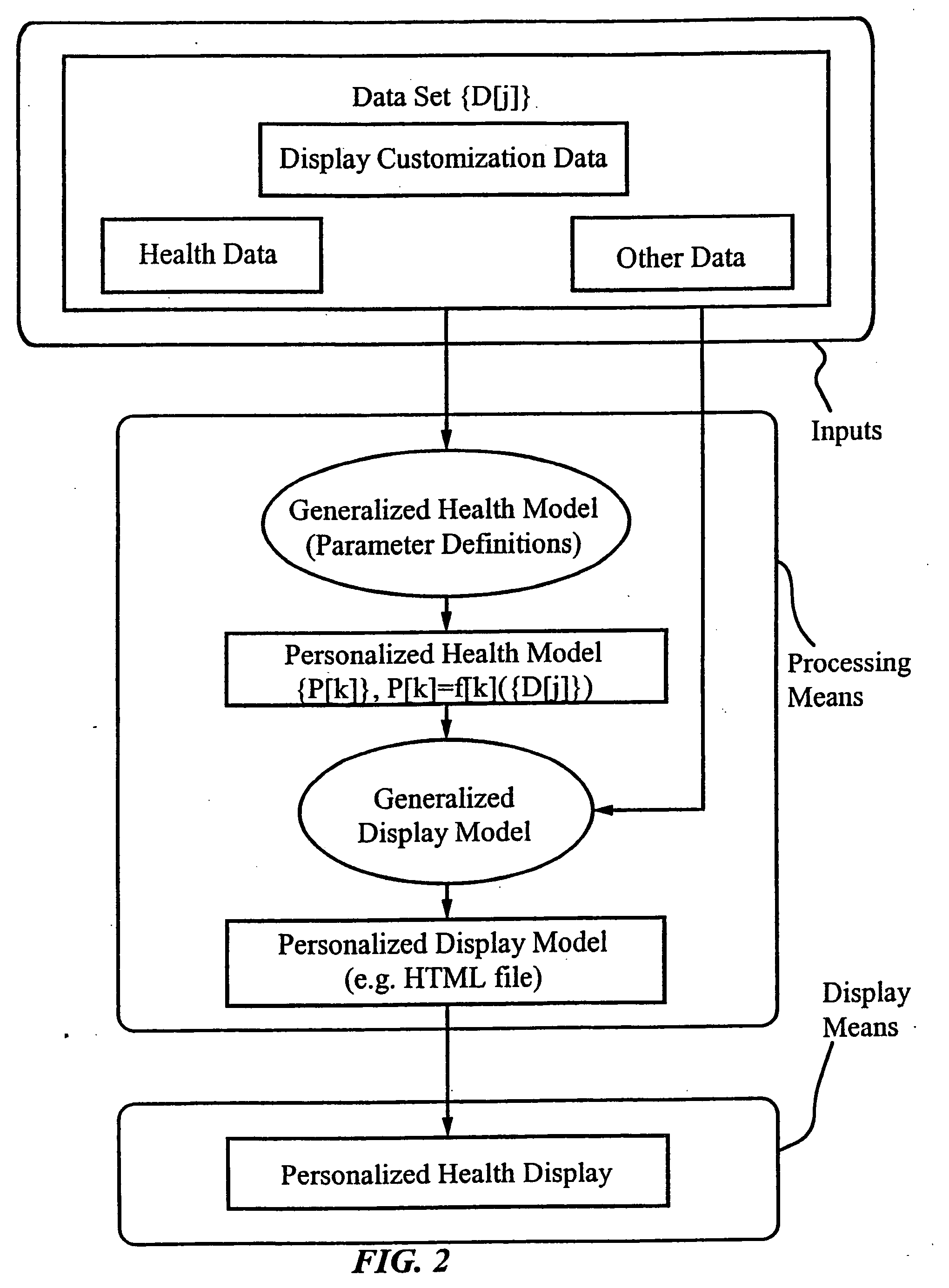Personalized display of health information
- Summary
- Abstract
- Description
- Claims
- Application Information
AI Technical Summary
Benefits of technology
Problems solved by technology
Method used
Image
Examples
Embodiment Construction
[0028] In the ensuing description, the notation {A[j]} is understood to refer to a set of A[j], for j taking some values between a minimum value 1 and a maximum value J. The notation A[j] is understood to refer to some (fixed) j.
[0029]FIG. 1 is a schematic diagram illustrating a preferred architecture for a system of the present invention. A processing means (preferably computer software) located on a central server is in communication over remote communication networks with a display means and a set of inputs. The central server processes information for multiple patients, and is thus capable of communicating with multiple display means and input locations. The central server comprises a data aggregation means, preferably a database, in communication with the set of inputs and with the processing means. The data aggregation means collects a subset of the data set {D[j]} from the inputs. Data collected by the data aggregation means is accessed by the processing means. The display m...
PUM
 Login to View More
Login to View More Abstract
Description
Claims
Application Information
 Login to View More
Login to View More - R&D
- Intellectual Property
- Life Sciences
- Materials
- Tech Scout
- Unparalleled Data Quality
- Higher Quality Content
- 60% Fewer Hallucinations
Browse by: Latest US Patents, China's latest patents, Technical Efficacy Thesaurus, Application Domain, Technology Topic, Popular Technical Reports.
© 2025 PatSnap. All rights reserved.Legal|Privacy policy|Modern Slavery Act Transparency Statement|Sitemap|About US| Contact US: help@patsnap.com



